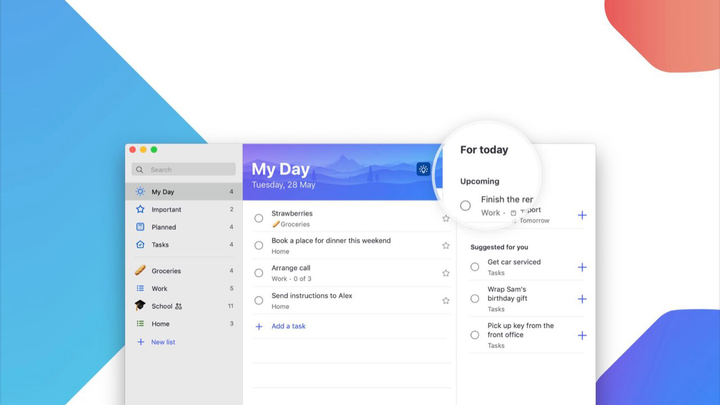



Followers
1
Category
Productivity
Tag
Software
Microsoft To Do (previously styled as Microsoft To-Do) is a cloud-based task management application. It allows users to manage their tasks from a smartphone, tablet and computer. The technology is produced by the team behind Wunderlist, which was acquired by Microsoft, and the stand-alone apps feed into the existing Tasks feature of the Outlook product range.
Resource: Wikipedia
Trello
Trello is a web-based, Kanban-style, list-making application and is developed by Trello Enterprise, a subsidiary of Atlassian. Created in 2011 by Fog Creek Software (now Glitch), it was spun out to fo
Git
Git is a distributed version control system designed to manage and track changes to files. It is commonly used by software developers working collaboratively to manage source code efficiently. Gi
Microsoft Excel
Microsoft Excel is a spreadsheet developed by Microsoft for Windows, macOS, Android and iOS. It features calculation, graphing tools, pivot tables, and a macro programming language called Visual Basic
Microsoft PowerPoint
Microsoft PowerPoint is a presentation program, created by Robert Gaskins and Dennis Austin at a software company named Forethought, Inc. It was released on April 20, 1987, initially for Macintosh Sys
Visual Studio Code
Visual Studio Code is a source-code editor made by Microsoft for Windows, Linux and macOS. Features include support for debugging, syntax highlighting, intelligent code completion, snippets, code refa
Microsoft OneDrive
Microsoft OneDrive (previously known as SkyDrive) is a file hosting service and synchronization service operated by Microsoft as part of its web version of Office. First launched in August 2007, OneDr
Microsoft Word
Microsoft Word is a word processor developed by Microsoft. It was first released on October 25, 1983, under the name Multi-Tool Word for Xenix systems. Subsequent versions were later written for sever
Microsoft Outlook
Microsoft Outlook is a personal information manager software system from Microsoft, available as a part of the Microsoft Office suite. Though primarily an email client, Outlook also includes such func
Tinder
Tinder is an online dating and geosocial networking application. Users anonymously "swipe right" to like or "swipe left" to dislike other users' profiles, which include their photo, a short bio, and a
Microsoft Teams
Microsoft Teams is a proprietary business communication platform developed by Microsoft, as part of the Microsoft 365 family of products. Teams primarily competes with the similar service Slack, offer
Microsoft Edge
Microsoft Edge is a cross-platform web browser created and developed by Microsoft. It was first released for Windows 10 and Xbox One in 2015, for Android and iOS in 2017, for macOS in 2019, and for Li
Telegram
Telegram is a freeware, cross-platform, cloud-based instant messaging (IM) system. The service also provides end-to-end encrypted video calling, VoIP, file sharing and several other features. It was l
GitHub
GitHub, Inc. is a provider of Internet hosting for software development and version control using Git. It offers the distributed version control and source code management (SCM) functionality of Git,
GitLab
GitLab Inc. is the open-core company that provides GitLab, the DevOps platform that combines the ability to develop, secure, and operate software in a single application. The open source software proj
Xcode
Xcode is Apple's integrated development environment (IDE) for macOS, used to develop software for macOS, iOS, iPadOS, watchOS, and tvOS. It was first released in 2003; the latest stable release is ver
Android Studio
Android Studio is the official integrated development environment (IDE) for Google's Android operating system, built on JetBrains' IntelliJ IDEA software and designed specifically for Android developm
Picsart
PicsArt is a San Francisco, California and Yerevan, Armenia-based technology company that develops the PicsArt suite of online photo and video editing applications, with a social creative community. T
TikTok
TikTok, known in China as Douyin (Chinese: 抖音; pinyin: Dǒuyīn), is a video-sharing social networking service owned by Chinese company ByteDance. The social media platform is used to make a variety of
Google Maps
Google Maps is a web mapping service developed by Google. It offers satellite imagery, aerial photography, street maps, 360° interactive panoramic views of streets (Street View), real-time traffic con
Google Duo
Google Duo is a video chat mobile app developed by Google, available on the Android and iOS operating systems. It was announced at Google's developer conference on May 18, 2016, and began its worldwid